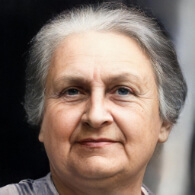Simple to Complex (Montessori)
In Montessori education, the principle of Simple to Complex refers to the sequence in which lessons and materials are presented to children. Initially, children are introduced to a concept in its simplest, most isolated form.[1] As they advance and become capable of processing more complex associations, they are progressively exposed to increasingly complex forms of the concept. This gradual progression enables them to assimilate information more effectively and build on their prior knowledge.
Montessori Quotes
- "Our care of the child should be governed, not by the desire to make him learn things, but by the endeavor always to keep burning within him that light which is called intelligence."[2]
- "We cannot create observers by saying 'observe', but by giving them the power and the means for this observation and these means are procured through education of the senses."[3]
Research and Critiques
- Pros: The simple to complex progression is seen as effective in gradually building the child's understanding and skills, allowing them to form a solid foundation before introducing more complex concepts. It aligns with cognitive learning theories that suggest learning is most effective when new information is connected to existing knowledge.[4]
- Cons: Critics might suggest that the simple to complex progression could be limiting for some children who are capable of understanding more complex ideas earlier. They argue for a more flexible approach that can be adapted to individual learner's capabilities.[5]
Comparisons to Other Methods
While many pedagogical approaches incorporate a progression from simple to complex, Montessori's approach is distinct in its systematic application of this principle, making it a fundamental part of all lessons and materials.[6]
See Also
Glossary of Montessori Terms
The Glossary of Montessori Terms is a collection of specific terms and vocabulary that are related to the Montessori method of education, primarily focusing on the theory and practice for children aged 3 to 6. The jargon used by Montessori educators offers a unique insight into child development as discussed by Maria Montessori. The 'Montepedia Glossary of Montessori Terms' originated from a glossary that was compiled by the late Annette Haines from the Montessori Training Centre of St. Louis, at the request of Molly O'Shaughnessy from the Montessori Centre of Minnesota. The reason behind the creation of this glossary was to supplement O'Shaughnessy's lecture at the Joint Annual Refresher Course that took place in Tampa, Florida, in February 2001.[7] The glossary has since been expanded and updated with additional 'Montessori Terms'.
- 3-Hour Work Cycle
- Absorbent Mind
- Adaptation
- Adolescence
- Albums
- Advisor
- Analysis of Movement
- Casa dei Bambini
- Children of the Earth
- Children's House
- Choice
- Classification
- Concentration
- Concrete to Abstract
- Control of Error
- Coordination of Movement
- Cosmic Education
- Creativity/Imagination
- Cycle of Activity
- Development of the Will
- Deviations
- Didactic Materials
- Director
- Discipline from Within
- Earth Child
- Elementary Classroom
- Erdkinder
- Exercises of Practical Life
- False Fatigue
- Freedom of Choice
- Freedom within Limits
- Grace and Courtesy
- Great Stories
- Ground Rules
- Guide
- Help from Periphery
- Human Tendencies
- Imagination
- Independence
- Indirect Preparation
- Indirect Presentation
- Isolation of a Difficulty
- Intrinsic Motivation
- Job
- Kinderhaus
- Language Appreciation
- Language Acquisition
- Learning Explosions
- Materials
- Materialised Abstractions
- Mathematical Mind
- Maximum Effort
- Mixed Ages
- Montessori Materials
- Nido
- Montessori Materials
- Normalization
- Obedience
- Peace
- Personality
- Planes of Development
- Points of Interest
- Practical Life
- Phonemic Awareness
- Phonics Instruction
- Phonological Awareness
- Prepared Environment
- Presentation
- Primary Classroom
- Psychic Embryo
- Reading Comprehension
- Repetition
- Respect
- Self-Discipline
- Self-Regulation
- Sensitive Periods
- Sensorial Materials
- Simple to Complex
- Socialization
- Society by Cohesion
- Sound Games
- Three-Hour Work Cycle
- Valorisation
- Vocabulary Enrichment
- Work
Please help to translate this page into your local language
References
- ↑ Montessori, M. (1912). The Montessori Method. Frederick A. Stokes Company.
- ↑ Montessori, M. (1912). The Montessori Method. Frederick A. Stokes Company.
- ↑ Montessori, M. (1912). The Montessori Method. Frederick A. Stokes Company.
- ↑ Lillard, A. (2017). Montessori: The Science Behind the Genius. Oxford University Press.
- ↑ Mooney, C. (2000). Theories of Childhood: An Introduction to Dewey, Montessori, Erikson, Piaget, and Vygotsky. Redleaf Press.
- ↑ Thayer-Bacon, B. J. (2017). Maria Montessori, John Dewey, and William H. Kilpatrick. Education and Culture, 33(2), 31-57.
- ↑ Haines, A. (2001). Glossary of Montessori Terms. Montessori Training Centre of St. Louis.
